The Australian reported that international student visas have “dived” amid de facto caps implemented by the Albanese government.
Data compiled from the Department of Home Affairs shows that the number of student visa applications in the first two months of 2025 was tracking significantly below the levels of 2023 and 2024.
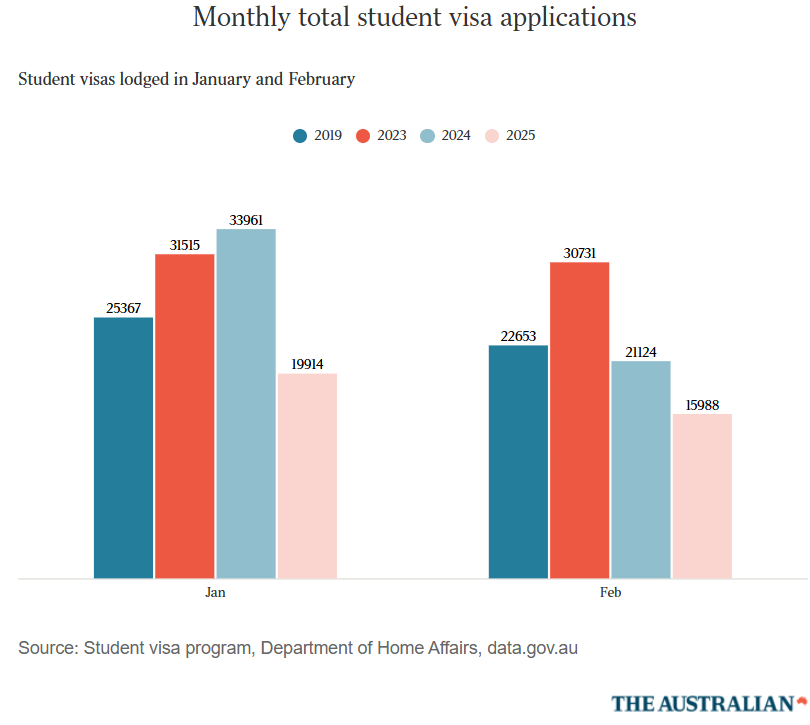
The number of student visas granted in the first two months of 2025 is also well below the 2023 peak, as illustrated below.
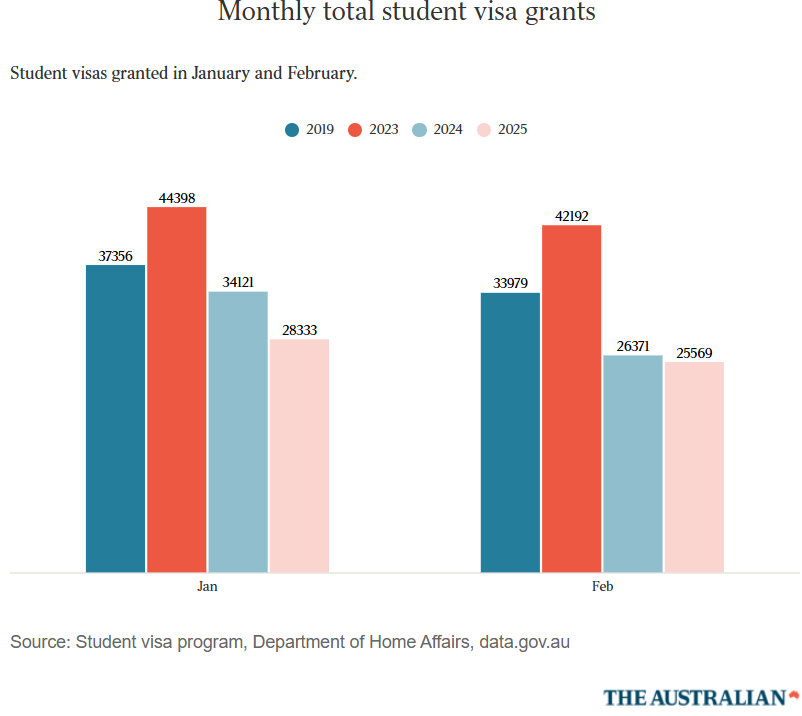
Higher education expert Andrew Norton claimed that the new Ministerial Direction 111, which came into effect in November 2025, is the “single biggest factor here to explain it”.
Under Ministerial Direction 111, the Department of Home Affairs is permitted to process visas for all institutions equally, up to 80% of the student cap previously allocated by the government under the failed legislation, commonly known as their Net Overseas Student Commencement number.
Once an institution has met its 80% allotment, it is put at the back of the list behind other universities that have not yet reached their 80% cap.
“Overall, higher education seemed surprisingly resilient in 2024 … but particularly January and February, applications are looking pretty low compared to comparator years”, Norton said. “And this is also the first couple of months where de facto caps have been in place”.
“Some students or prospective students last year had already made up their mind about what they wanted to do … but for the new year, they looked at the policies of last year and said I’m not going to Australia”.
The following chart from Justin Fabo of Antipodean Macro shows that total student visa grants have merely returned to pre-pandemic levels. They have not crashed.
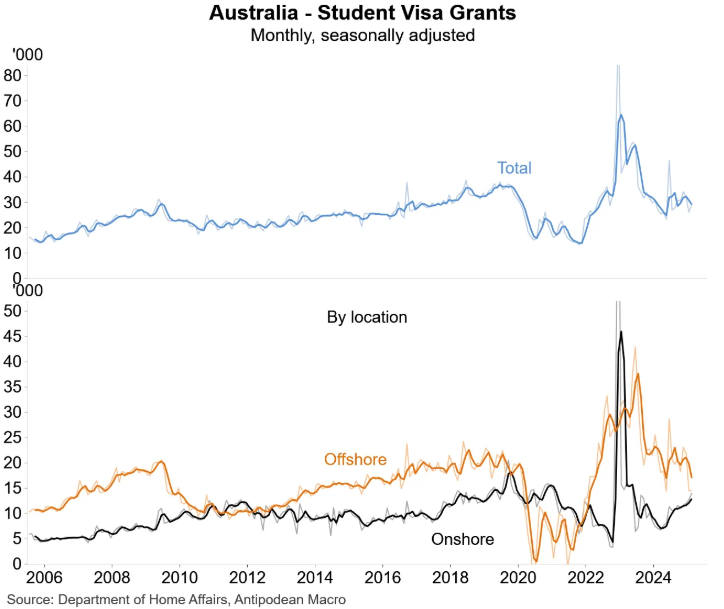
The reality is that international student numbers need to be managed more effectively.
At the end of 2024, a record 1.095 million international students were enrolled in courses in Australia. This was 143,000 higher than the 2019 pre-pandemic peak and more than triple (749,000) higher than the number of enrolments in 2005.
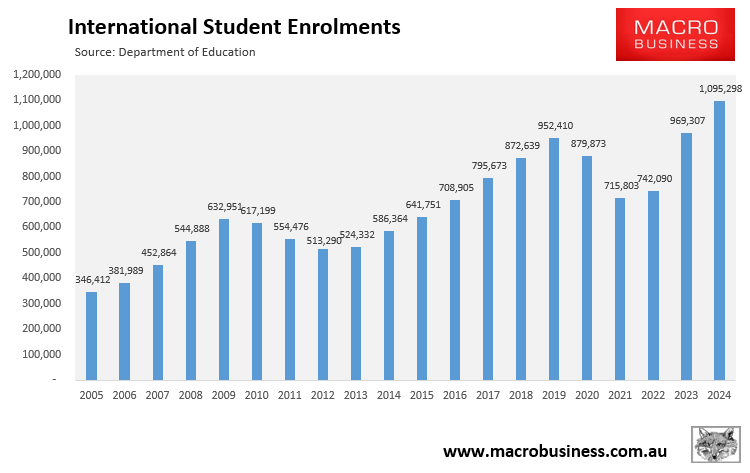
The number of international student commencements was also at a record high at the end of 2024. These were more than 60,000 higher than the 2019 pre-pandemic peak and more than triple the level of 2005.
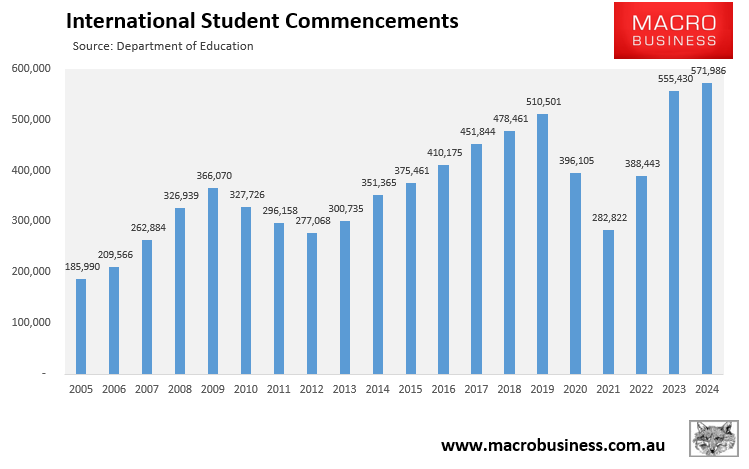
Australia already had the highest concentration of international students in the world in 2019 before the pandemic hit. The concentration of international students has worsened since then.
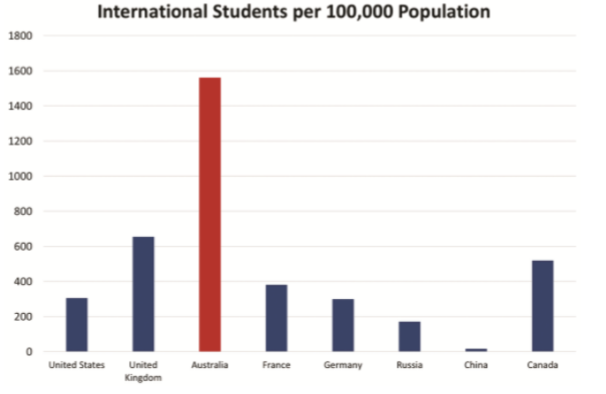
Source: Salvatore Babones
The number of international students transitioning to graduate visas has also increased significantly, more than doubling since the start of the pandemic.
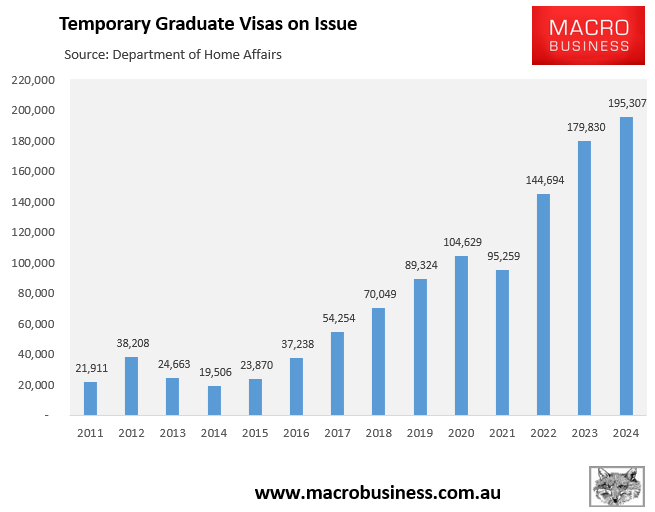
Finally, former students who refuse to return home and appeal their visa cancellations have also contributed to the surge in temporary bridging visas.
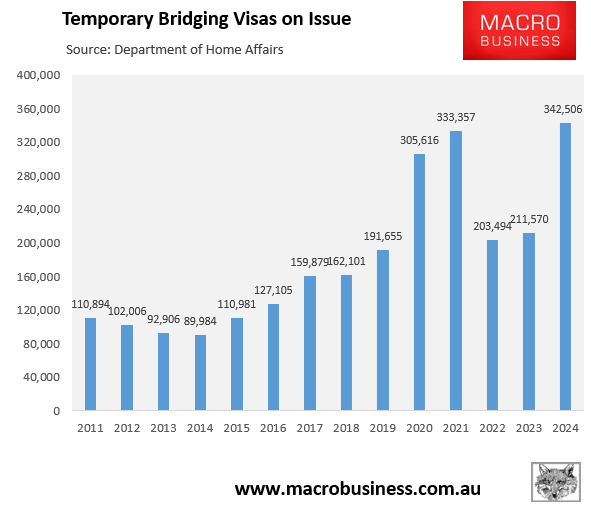
Australia’s overconcentration of international students has placed immense strain on the nation’s rental market and eroded pedagogical standards at universities.
The situation became so bad that Phil Honeywood, chief executive of the International Education Association of Australia, claimed that international education was a “ponzi scheme” for recruiting non-genuine students through migration channels (here and here).
The federal government should manage numbers down and prioritise quality over quantity. The types of reforms needed include:
- Significantly increasing English-language proficiency requirements and mandating prospective students to pass entrance exams before qualifying for a student visa.
- Significantly increasing financial requirements, including the requirement to deposit funds into an escrow account before arriving in Australia.
- Reducing the number of hours that international students can work and severing the direct link between studying, working, and obtaining permanent residency.
- Allowing only top-of-class graduates to receive graduate visas.
- Closing down dodgy private colleges that act as visa mills.
- Because Australian universities are non-profit enterprises that do not pay taxes, imposing a levy on international students to ensure that Australians receive a financial return from the trade.
Universities should also be required to provide on-campus housing for international students in proportion to their enrollment numbers, thereby reducing pressure on the private rental market.
Pedagogical standards and the learning experience of local students must be paramount. Universities and private colleges must become places of excellence. This, in turn, necessitates a significantly lower number of high-quality international students.

